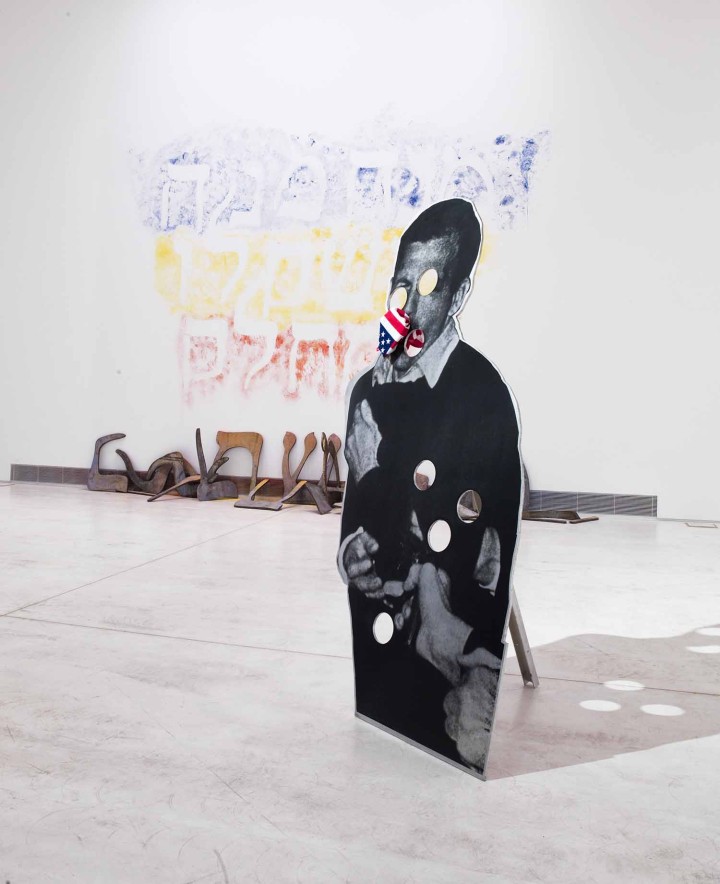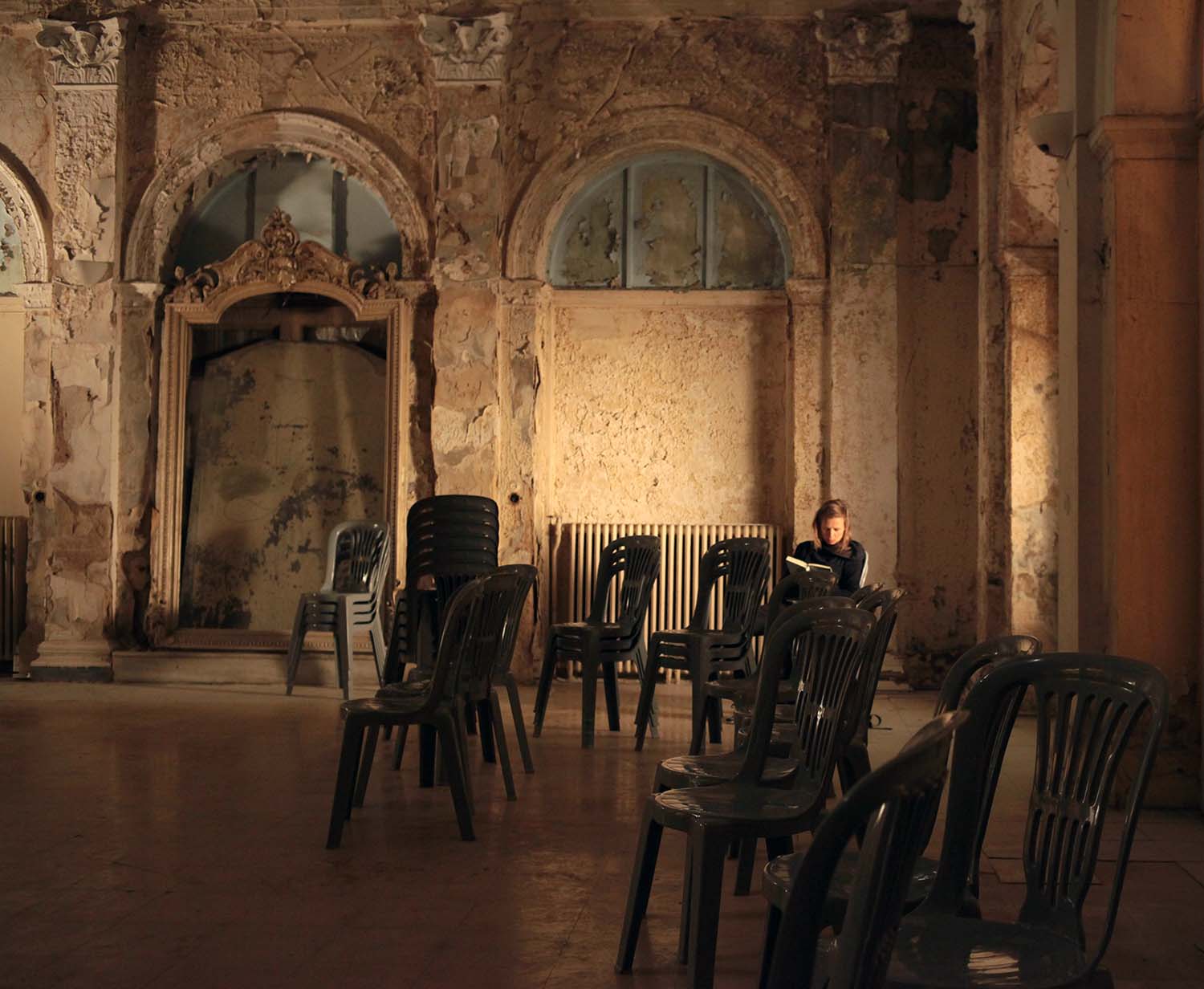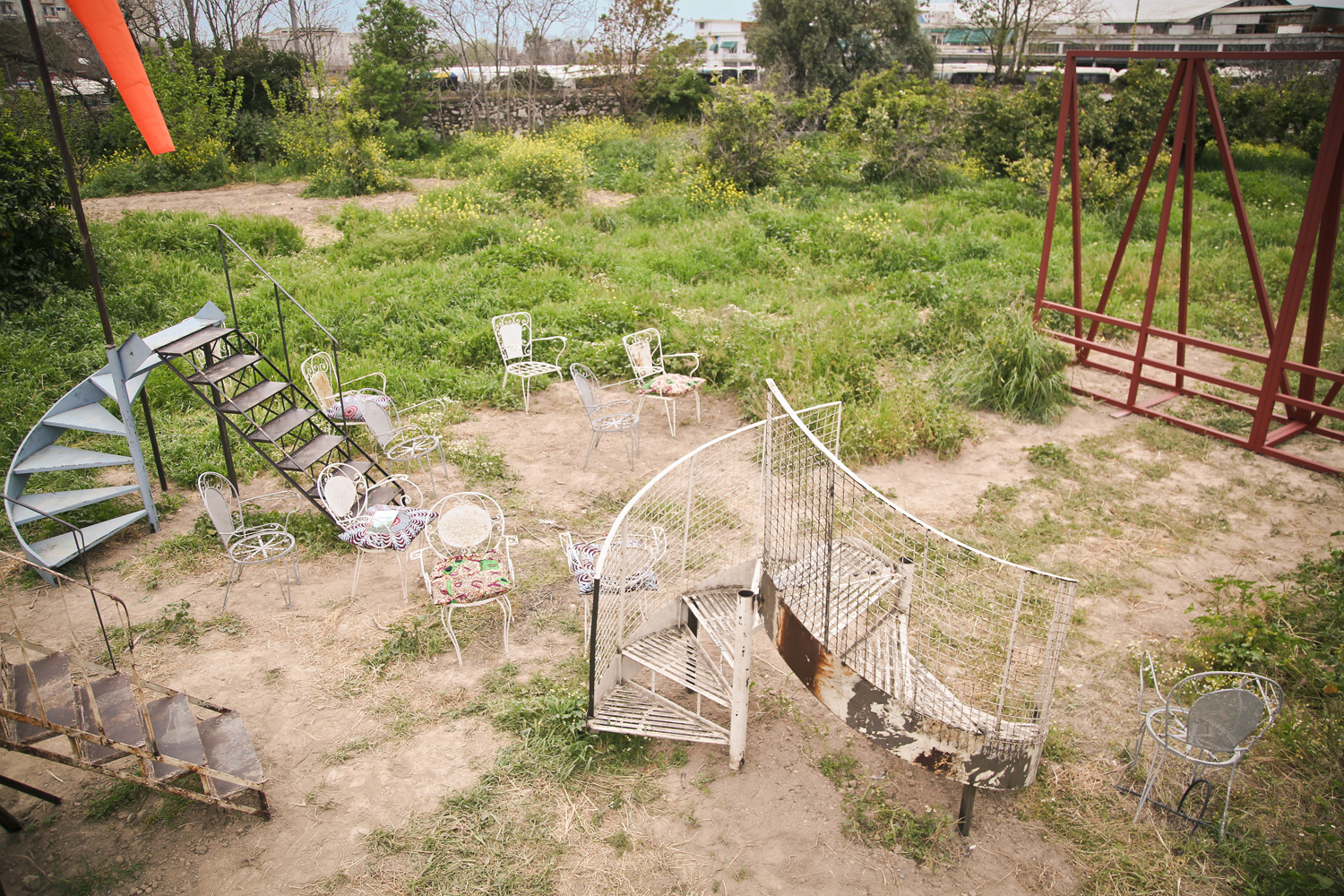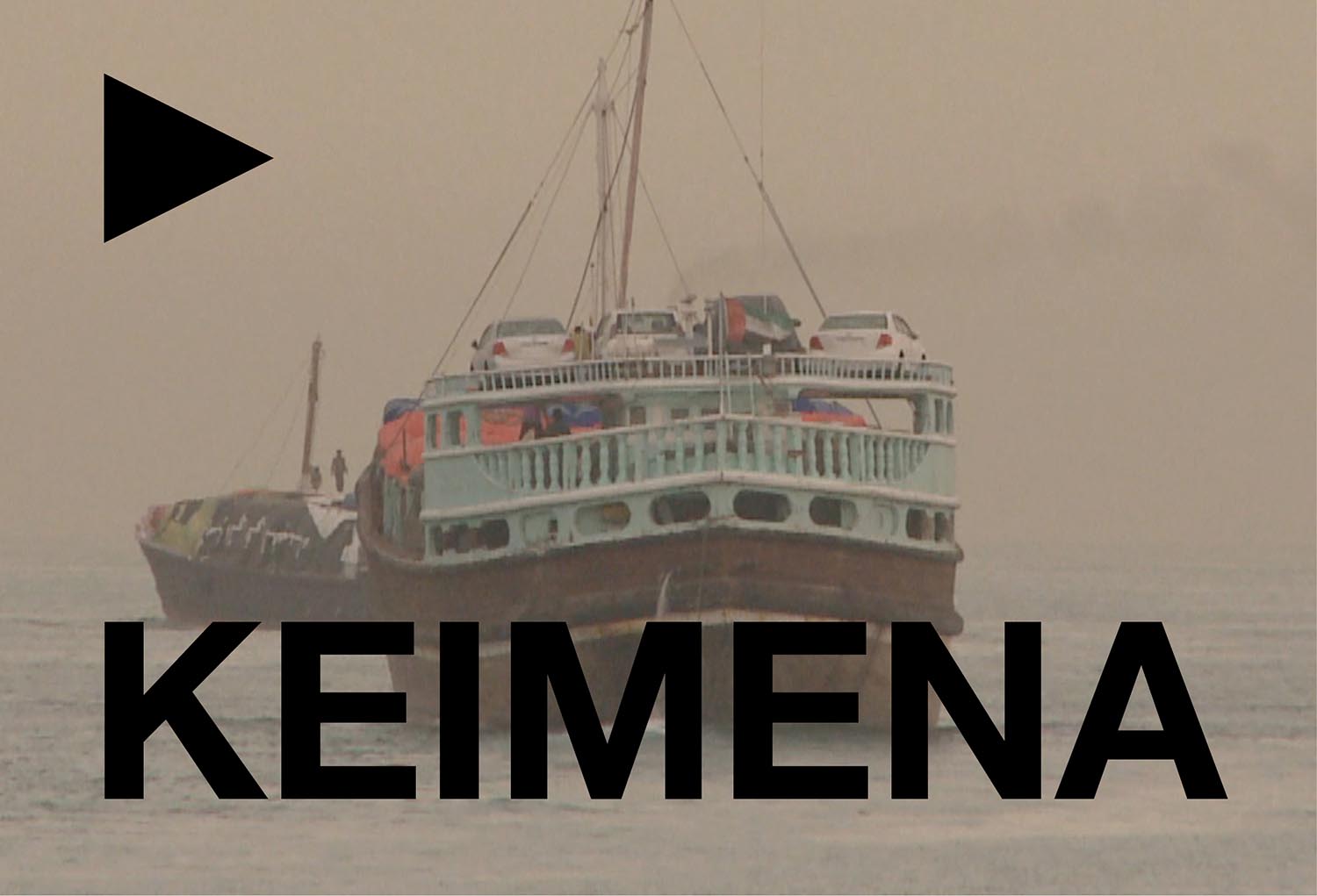For Athenians it’s been a long time coming. In 2002, a fifty-year lease was signed with the owners of the vast former Fix Brewery with the aim of opening the city’s first museum dedicated to contemporary art by the 2004 Olympics. Now, and with justified fanfare subdued by astonishment that it finally exists, EMST has been properly inaugurated. Sort of.
“Urgent Conversations,” the museum’s first temporary exhibition, invites dialogue between the Greek state collection and that of M HKA in Antwerp. It is structured with reference to twenty-two thematic blocks which arose out of a thought experiment: the curators chose one piece from each collection and balanced these with a third once a word or phrase had been decided upon. Around seventy works from sixty-six artists were selected using this process.
Utilizing interchangeable phrases like “The Unstable Self” and “Secular Devotion,” the curation could be dismissed as a forced gimmick. Notwithstanding this, we are treated to several wonderful works, many of which have been long hidden from public view. A large welcoming canvas by Apostolos Georgiou (Untitled, 2004) depicting two seated gentlemen, one reading a dirty magazine, the other cowering beneath an icon of the Virgin Mary, is paired with Marlene Dumas’s dark and troubling Sacrifice (1993) in which a naked woman sits on the floor facing a row of three identical men, heightening the tension present in both works.
A series of photographs by Rena Papaspyrou (Stilponos 7 – Episodes in Matter, 1979) show the artist peeling away plaster from an historic building, accelerating the urban crumble ever-present in the city, suitably appropriate in the freshly whitewashed gallery space. Further responding to the location, Allan Sekula’s Middle Passage, Chapter 3 from Fish Story (1990–93), a fascinating ethnographic venture into maritime life, resonates purposefully, despite being from the Flemish collection, with Greece’s maritime history.
While the exhibition achieves what it sets out to do, one often feels at a loss as to why it set out to do what it did in the first place. Nevertheless, the range of works on show examine the versatility of the structure, with further charm to be revealed in stunning upper floors which will eventually house the permanent collection, hopefully in time for documenta 14. An air of optimism flows through the spaces, and I left charged with confidence that the museum has a long and exciting future.




